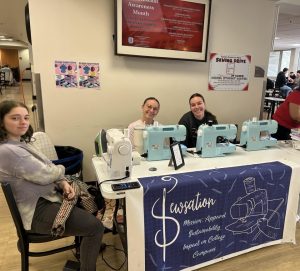Students who like to build characters and worlds using programs such as The Sims can now attend real Bradley classes in a similar virtual world called Second Life.
“Second Life is software and network connectivity that results in an online virtual world presented by Linden Lab,” said Ed Lamoureux, associate professor in the Department of Interactive Media. “It features mostly user-created content and offers international and global connectivity to users represented like avatars.”
Second Life is like The Sims, in a way, except it isn’t quite a game.
“It’s not a game – it doesn’t have levels or a fixed narrative, and there’s no shooting or killing,” Lamoureux said. “It is, perhaps, the most creative and globally interactive space on the planet. Second Life is wonderful for social interaction, learning and many different types of simulations. There’s a vibrant economy – the Linden dollar trades at roughly 265 Lindens to $1 US – that churns millions of U.S. dollars weekly.”
This online world is entirely user-created, so it offers creativity and a lot of different available activities, he said.
“The virtual world offers interactive social spaces for all manner of activities, including education, the arts and business,” Lamoureux said. “Because it is a user-created environment, it is incredibly creative. Because it is global, it is intensely intercultural.”
The reason for using Second Life in classes varies by the faculty member using it, he said.
“I’ve used Second Life to teach Bradley students to do qualitative field research, or ethnography. In the fall, I’ll be teaching a class that teaches entrepreneurship in visual environments,” Lamoureux said. “I teach in Second Life because I teach interactive media students who are interested in the industries that produce and utilize online environments, games and websites. Our students are at the cutting edge of the use for interactive computational technologies.”
Executive Director of the Cullom-Davis Library Barbara Galik said she’s seen Second Life taught for several other occasions.
“At other universities, Second Life has been used for language study, visual design, entrepreneurship, medical simulations, emergency procedure training, etc.,” she said. “I think there are definite benefits for students. I was a language major, and because it is a global environment, I can see wonderful opportunities to practice your language skills with native speakers.”
Using virtual worlds such as Second Life are important to students so they can keep up with the current technology, Lamoureux said.
“If students and universities like Bradley don’t learn to function in and properly leverage virtual worlds, the students and schools will quickly find themselves far behind the technological curve,” he said. “There are over 200 schools and numerous business enterprises involved in Second Life now.
“Bradley has a presence in Second Life, but we have a long way to go to catch up with other universities that have been much more active within the space. We’re falling behind, but we do have some of the necessary infrastructure in place for additional activities,” he said.




